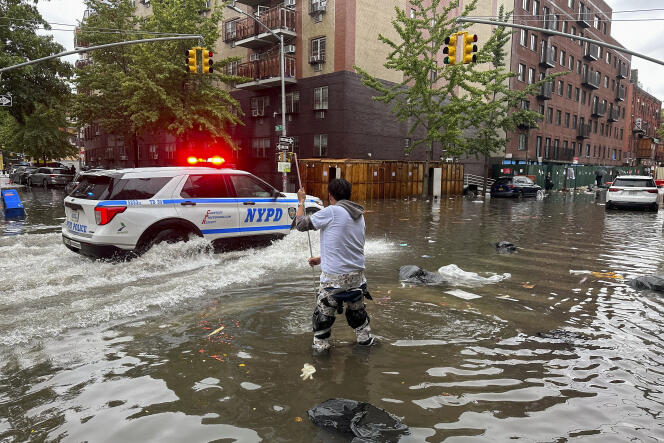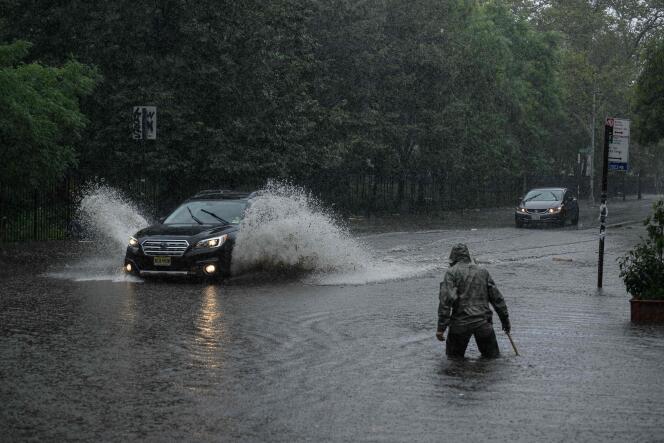


Fifteen centimeters of water fell on Manhattan on Friday morning, September 29, while JFK airport was submerged by 20 centimeters, breaking a 1948 record. New York was not used to such a deluge, an event brutal enough to activate the emergency flash flood warning system. "A FLASH FLOOD WARNING is in effect for this area until 12:30 pm EDT. This is a dangerous and life-threatening situation. Do not attempt to travel unless you are fleeing an area subject to flooding or under an evacuation order," read the alert New Yorkers received on their cell phones at 9:30 am. No casualties were reported during the downpour, though there were three rescue operations in basements and 15 in cars, according to Mayor Eric Adams.

Nevertheless, it demonstrated that New York – which had experienced its wettest September in over a century – was not equipped to receive torrential flooding in these times of global climate change. New York's sewage system was not calibrated to handle such rainfall. "All drainage systems have their limitations and New York City’s is 1.75 inches [4.4 cm] of rainfall per hour. Unfortunately for many New Yorkers, the storm that deluged the region on Friday dropped more than two inches [5.1 cm] between 8 am and 9 am — and then kept on coming," summarized the New York Times. The 12,000-kilometer water drainage system became fully blocked. "When it's flooded that much, the water backs up," said Dave Balkan, manager of a Queens sewer company "That's when people start getting sewage gushing out of their drains or basement toilets."
The backwater left streets flooded, cars submerged, expressways blocked and the subway paralyzed. The Central Park Zoo was so underwater that a sea lion escaped from its tank. Flights were delayed by a number of hours at the city's airports, and one of the terminals at La Guardia airport even had to close temporarily. The tide, which was high when the rains came, exacerbated the flooding. Spectacular images were broadcast around the world.
????#BREAKING: Sea lions have escaped the Central Park zoo due severe flooding ⁰
— R A W S A L E R T S (@rawsalerts) September 29, 2023
????#Manhattan | #NewYork
Due to the extreme flooding that is occurring across New York City, the water level in the Sea Lion area rose significantly. As a result, the Sea Lions were able to swim over… pic.twitter.com/XCZ5FFZK5B
"The sad reality is our climate is changing faster than our infrastructure can respond," Rohit Aggarwala, head of the city's Department of Environmental Protection, told the New York Times. New York had already experienced a serious crisis in 2021, when Hurricane Ida claimed 11 lives, people drowning in basement dwellings, often illegally rented and inhabited, in the Queens neighborhood.
A city report entitled The New Normal had estimated in 2021 that "completely
recalibrating our sewers for storms like Ida would require a decades-long, potentially $100-billion investment." Upgrading the system in southeast Queens alone cost $2 billion.
You have 52.42% of this article left to read. The rest is for subscribers only.
